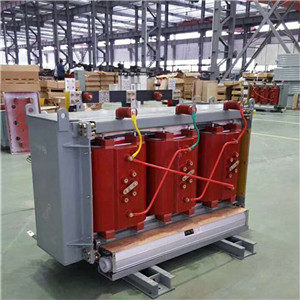Dry distribution transformer accessories no difference between load and load
No-load loss and load loss are important parameters of dry distribution transformers, but many people do not know the difference.
The no-load operation of the distribution transformer refers to the working state in which the primary winding of the transformer is connected to the power supply and the secondary winding is open. At this time, the current in the primary winding is called the no-load current of the transformer. The no-load current produces an idling magnetic field. Under the action of the main magnetic field, the electromotive force is induced in the primary and secondary windings.
When the power transformer is running at no load, although there is no power output on the secondary side, the primary side still draws a part of the active power from the grid to compensate for the hysteresis loss and eddy current loss caused by the magnetic flux saturation in the iron core. The magnitude of hysteresis loss depends on the frequency of the power supply and the area of the hysteresis loop of the core material; the eddy current loss is proportional to the square of the maximum flux density and frequency. In addition, there is also copper loss caused by no-load current. For transformers of different capacities, the magnitude of no-load current and no-load loss are different.

The load operation of the dry type transformer refers to the working condition when the primary winding is connected to the power supply voltage and the secondary winding is connected to the load. At this time, the secondary side of the transformer also has current flowing, and the original access circuit increases correspondingly to the no-load, and the secondary side voltage is affected by the load.
Low-loss dry-type transformers use the principle of electromagnetic induction to change the AC voltage. The main components are the primary coil, the secondary coil, and the core (core). It is often used as a lifting voltage, matching impedance, safety isolation, etc. in electrical equipment and wireless circuits. When the transformer is running at no load, it only consumes no-load loss, ie iron loss and spur, which is 6% of the total capacity. When the load is running, it is no-load loss + load loss, that is, copper loss, which is the total consumption of the transformer.
After years of research and development, ZTELEC has produced low-loss dry distribution transformers. Please contact me if you need it.
The no-load operation of the distribution transformer refers to the working state in which the primary winding of the transformer is connected to the power supply and the secondary winding is open. At this time, the current in the primary winding is called the no-load current of the transformer. The no-load current produces an idling magnetic field. Under the action of the main magnetic field, the electromotive force is induced in the primary and secondary windings.
When the power transformer is running at no load, although there is no power output on the secondary side, the primary side still draws a part of the active power from the grid to compensate for the hysteresis loss and eddy current loss caused by the magnetic flux saturation in the iron core. The magnitude of hysteresis loss depends on the frequency of the power supply and the area of the hysteresis loop of the core material; the eddy current loss is proportional to the square of the maximum flux density and frequency. In addition, there is also copper loss caused by no-load current. For transformers of different capacities, the magnitude of no-load current and no-load loss are different.

The load operation of the dry type transformer refers to the working condition when the primary winding is connected to the power supply voltage and the secondary winding is connected to the load. At this time, the secondary side of the transformer also has current flowing, and the original access circuit increases correspondingly to the no-load, and the secondary side voltage is affected by the load.
Low-loss dry-type transformers use the principle of electromagnetic induction to change the AC voltage. The main components are the primary coil, the secondary coil, and the core (core). It is often used as a lifting voltage, matching impedance, safety isolation, etc. in electrical equipment and wireless circuits. When the transformer is running at no load, it only consumes no-load loss, ie iron loss and spur, which is 6% of the total capacity. When the load is running, it is no-load loss + load loss, that is, copper loss, which is the total consumption of the transformer.
After years of research and development, ZTELEC has produced low-loss dry distribution transformers. Please contact me if you need it.
